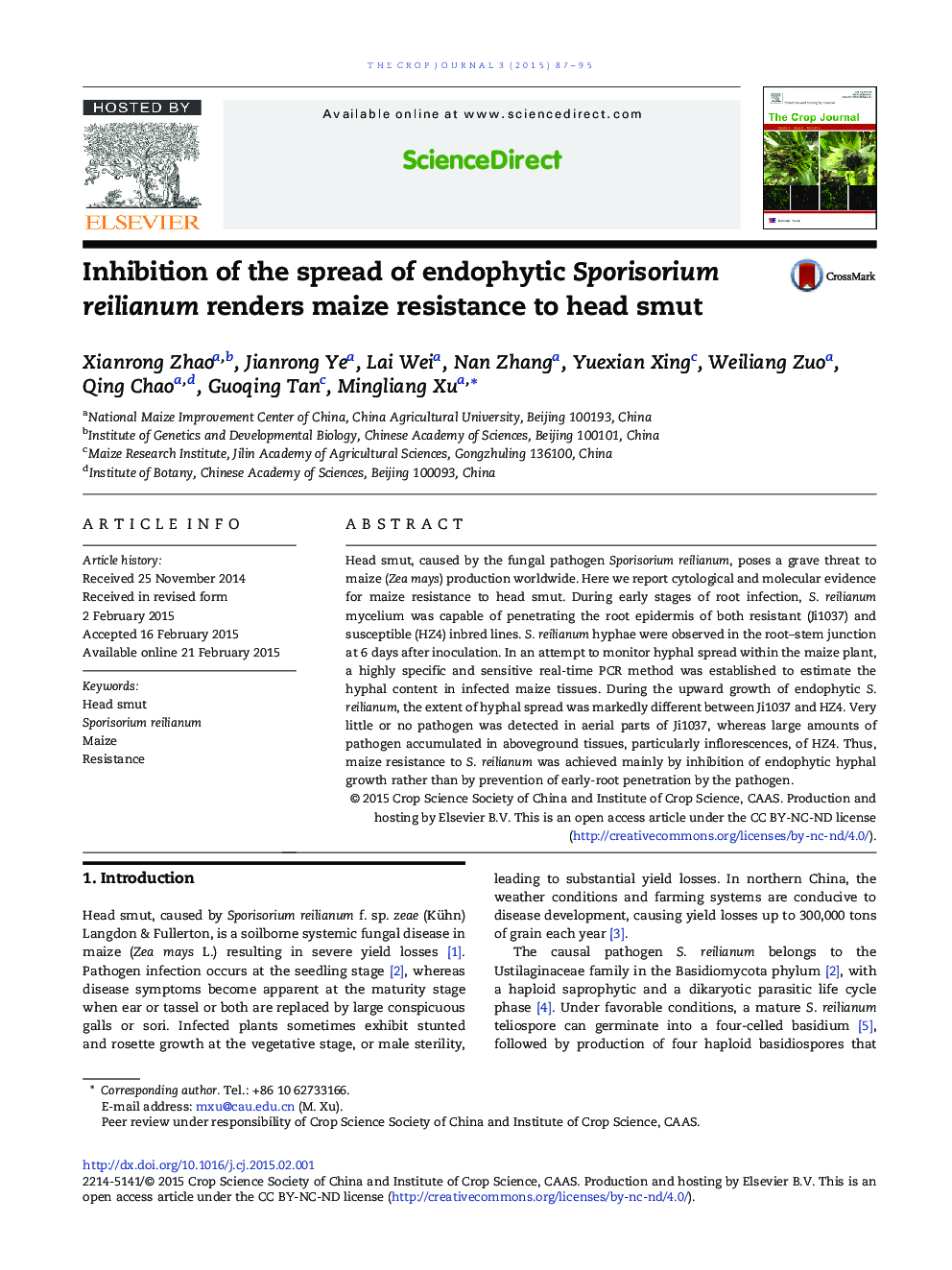| Article ID | Journal | Published Year | Pages | File Type |
|---|---|---|---|---|
| 2079481 | The Crop Journal | 2015 | 9 Pages |
Head smut, caused by the fungal pathogen Sporisorium reilianum, poses a grave threat to maize (Zea mays) production worldwide. Here we report cytological and molecular evidence for maize resistance to head smut. During early stages of root infection, S. reilianum mycelium was capable of penetrating the root epidermis of both resistant (Ji1037) and susceptible (HZ4) inbred lines. S. reilianum hyphae were observed in the root–stem junction at 6 days after inoculation. In an attempt to monitor hyphal spread within the maize plant, a highly specific and sensitive real-time PCR method was established to estimate the hyphal content in infected maize tissues. During the upward growth of endophytic S. reilianum, the extent of hyphal spread was markedly different between Ji1037 and HZ4. Very little or no pathogen was detected in aerial parts of Ji1037, whereas large amounts of pathogen accumulated in aboveground tissues, particularly inflorescences, of HZ4. Thus, maize resistance to S. reilianum was achieved mainly by inhibition of endophytic hyphal growth rather than by prevention of early-root penetration by the pathogen.
